Maximising the potential of broadleaves to establish more quickly. The Tree Production Innovation Fund (TPIF), Forestry Commission supported project will use genetically diverse seed selected for high growth and form and explore different nursery protocols and silvicultural interventions compared to standard practice. Research will involve field trials and will be guided by a literature review.
Project overview
Supersizing Broadleaves is an innovative project investigating seed source, nursery stock production and tree establishment in the UK. It asks, ‘What happens when you take the best seed available, raise it with the best practice for the particular species and site, and establish it in the best possible way?’
Future Trees Trust has been working over the last twenty years to identify superb examples (called plus trees) of oak, sycamore, birch and cherry. We have brought these plus trees together in grafted clonal seed orchards to produce qualified seed for industry. In 2023, we established progeny trials for these species to understand adaptive traits and assess family performance in a range of environments. By selecting the best trees, it should be possible to grow higher quality timber in terms of form and vigour. However, genetics only accounts for a small amount of variation in growing timber. Variation occurs at every step of the tree production process whether this is selecting the biggest acorns, growing trees in cells rather than bare rooted and thus reducing root damage, or having a more sheltered or fertile site. All influence how well a tree gets established.
This project seeks to investigate some of these variables to help trees get established more quickly, and therefore reduce the need for weed control. Over the next two years, we will raise plants and establish three full factorial trials of pedunculate oak, silver birch and sycamore using source identified and qualified material on a range of sites and look after them in different ways. We expect that qualified material that is cell grown and planted with good weed control will establish more quickly than source identified material with no weed control, and that where nutrients are limited, an addition of NPK fertilizer will improve growth.
Furthermore, the quality of the plants produced in terms of root architecture can have a significant influence on how quickly trees get established. We will carry out basic root architecture assessments on six of each bare rooted and cell grown species, of both qualified and source identified material and calculate root shoot ratios on a further six trees of each seedlot to give baseline data on root structure. FTT will also carry out some ‘destructive sampling’ (the removal of material from a specimen for research purposes) two years after planting to reevaluate the root architecture and tie this back to performance. We will therefore destructively sample 288 trees from each trial site (six trees from each of 48 treatments) to see how well the trees have performed.
In addition to establishing research trials, four monographs (in depth literature reviews) for the species being studied, and also wild cherry, Prunus avium, will be produced to help forestry practitioners decide on which species to plant, which nursery production method to use, and which management interventions are needed.
The main work of trial establishment, root architecture assessments and collection of baseline data is being carried out this winter period, November 2023 – March 2024.
Project Progress
The destructive sampling work is now being undertaken at laboratories at SRUC and includes:
- Seedling height
- Seedling root collar diameter
- Seedling height-diameter ratio (sturdiness index) (derived)
- Presence/absence of taproot
- Number of primary lateral long roots (the “structural” roots)
- Biomass (dry weight) – structural roots, fine roots, stem, foliage (if present) (summing up gives total seedling biomass)
- Root-shoot ratio – dry weight of roots/dry weight of shoots, including dry-weight structural/fine root ratio, which is a measure of the “fibrosity” of the seedlings
- Note if bareroot stock is undercut (with root regen), wrenched (with root regen), or untreated; container stock if there is any spiral rooting, constrictions that would limit structural root extension away from the root plug.
- Subjective scoring of root fibrosity, of the potential surface area of the root system for water uptake after planting.
WP3 – Trial establishment
All planning for the trials was done in the previous financial year. The trial with Forestry England was successfully planted in November 2023 and base line data recorded.
Trial Site 1: Forestry England, Farley Moor in Derbyshire
Species: Testing 3 native broadleaf species: Oak, Birch, Sycamore.
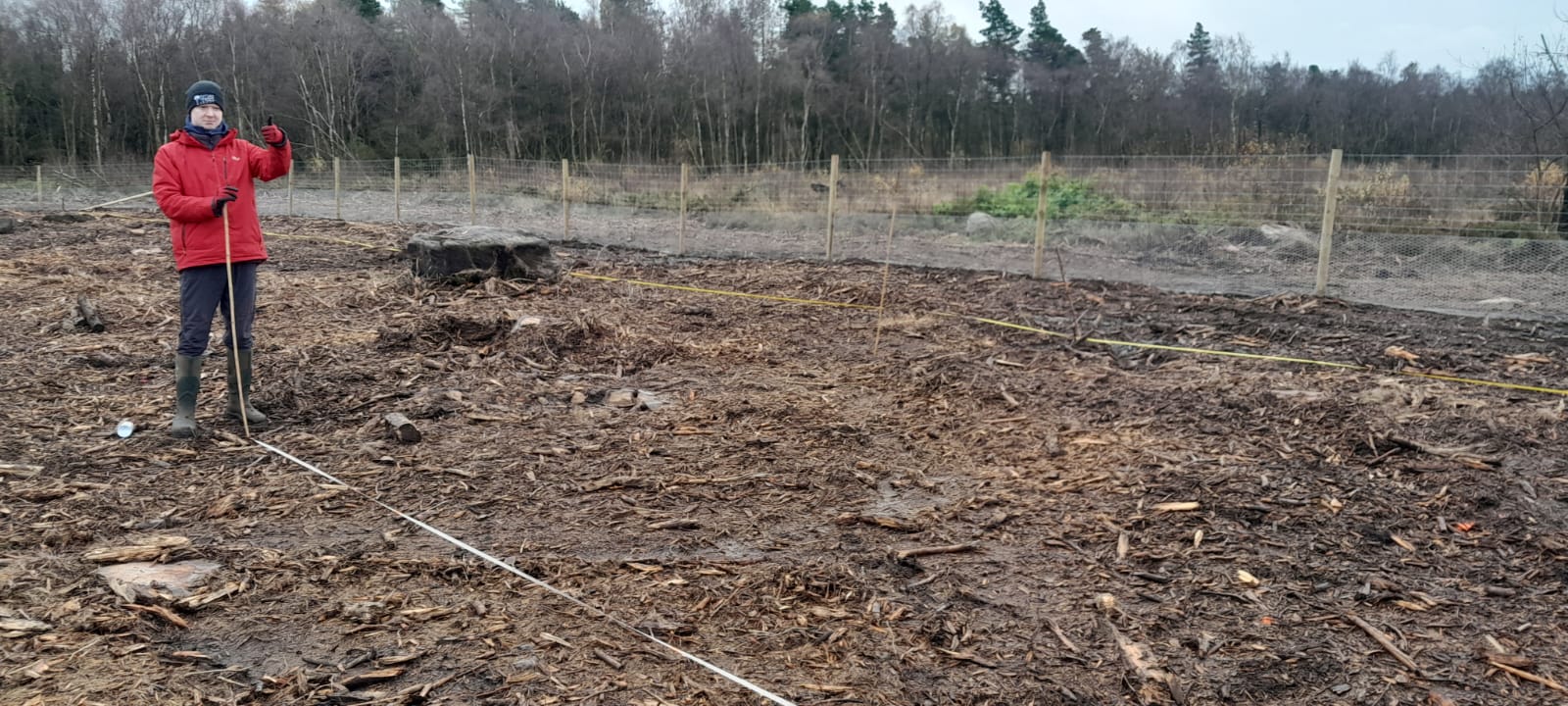
Image: FTT team measuring out the site and marking where the trees will go
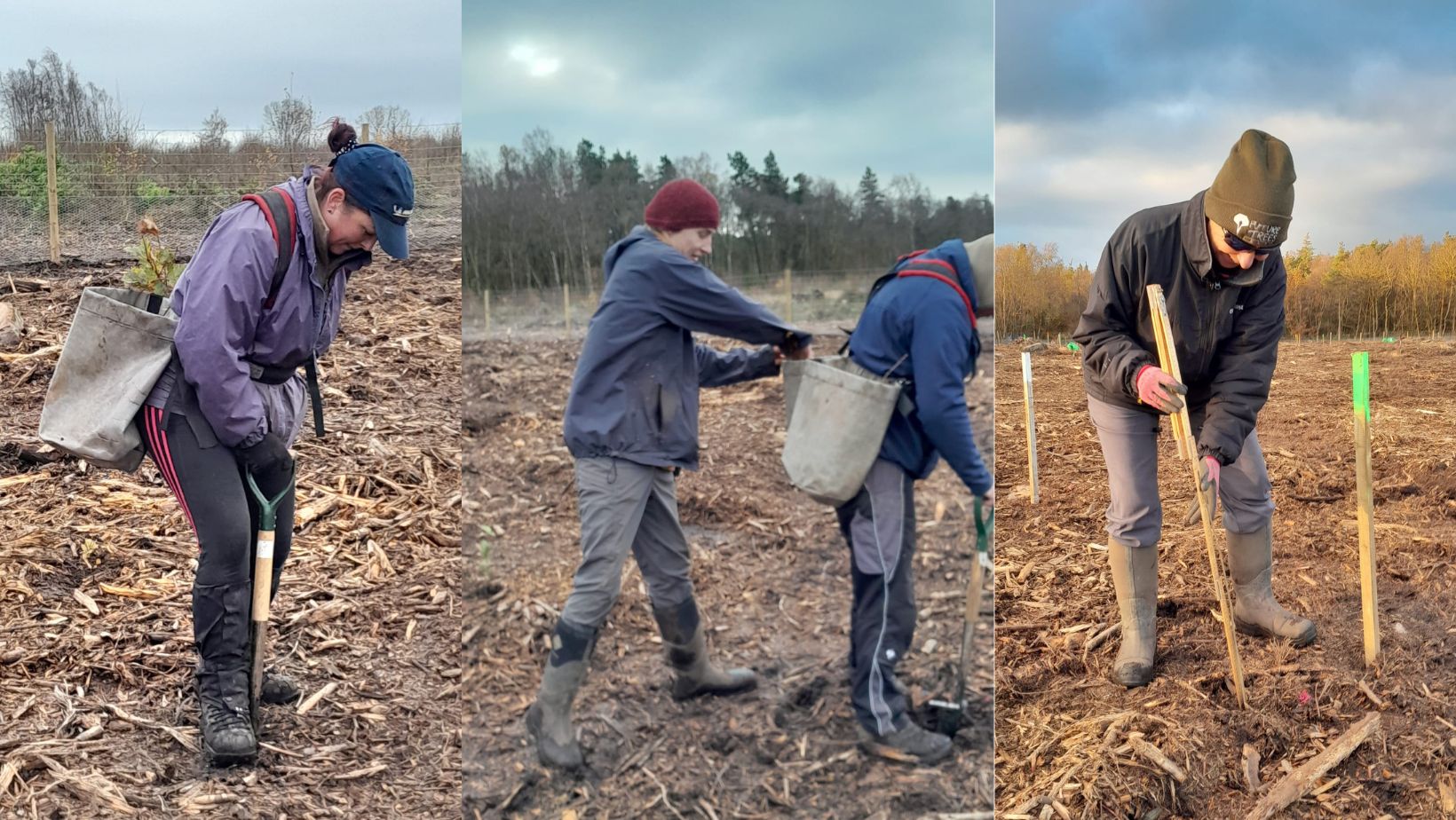
Images: Planting trials and measuring tree height for baseline data
Trial Site 2: National Trust & Forestry England, Clumber Park, Nottinghamshire
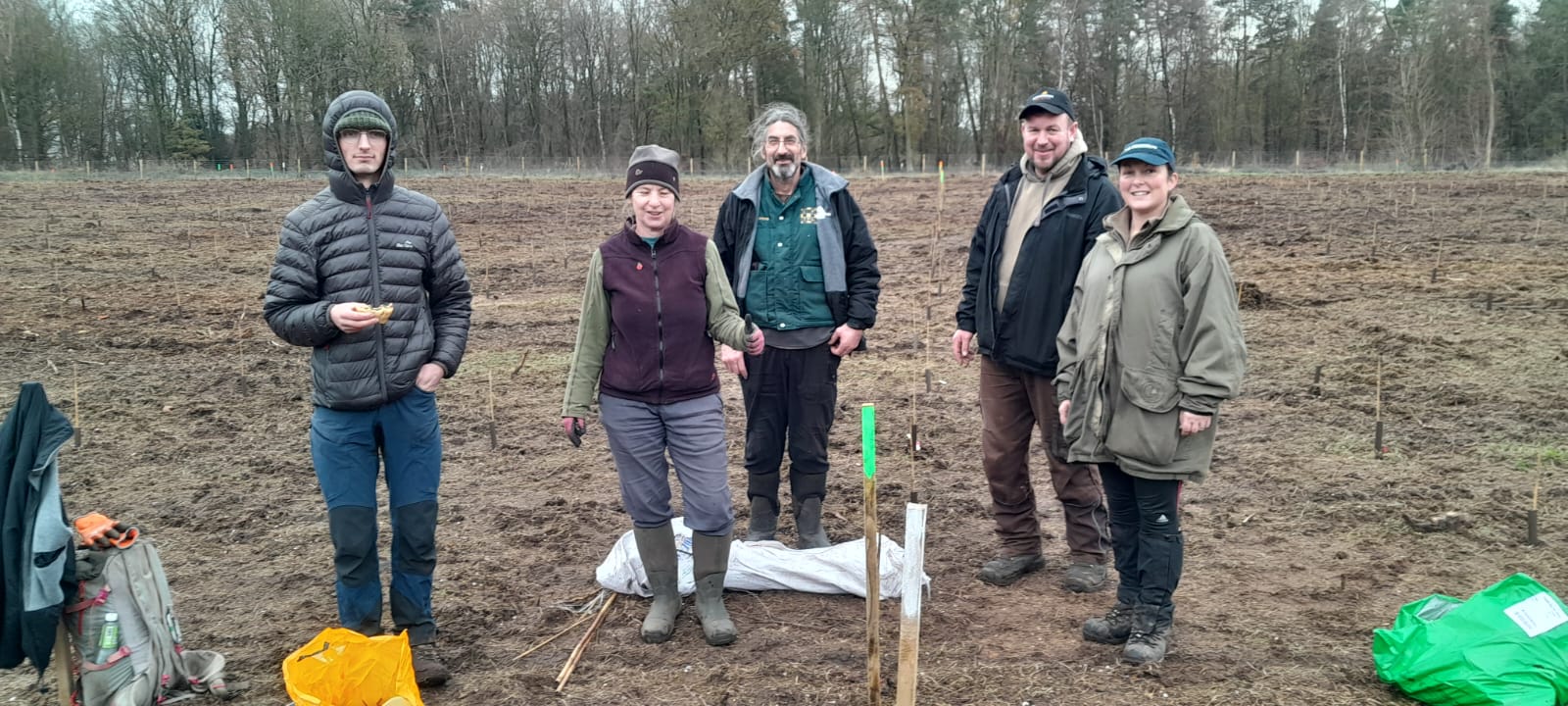
Image: Planting Oak, Birch and Sycamore at National Trust, Clumber Park
Trial Site 3: Babworth Estate planted January 2024
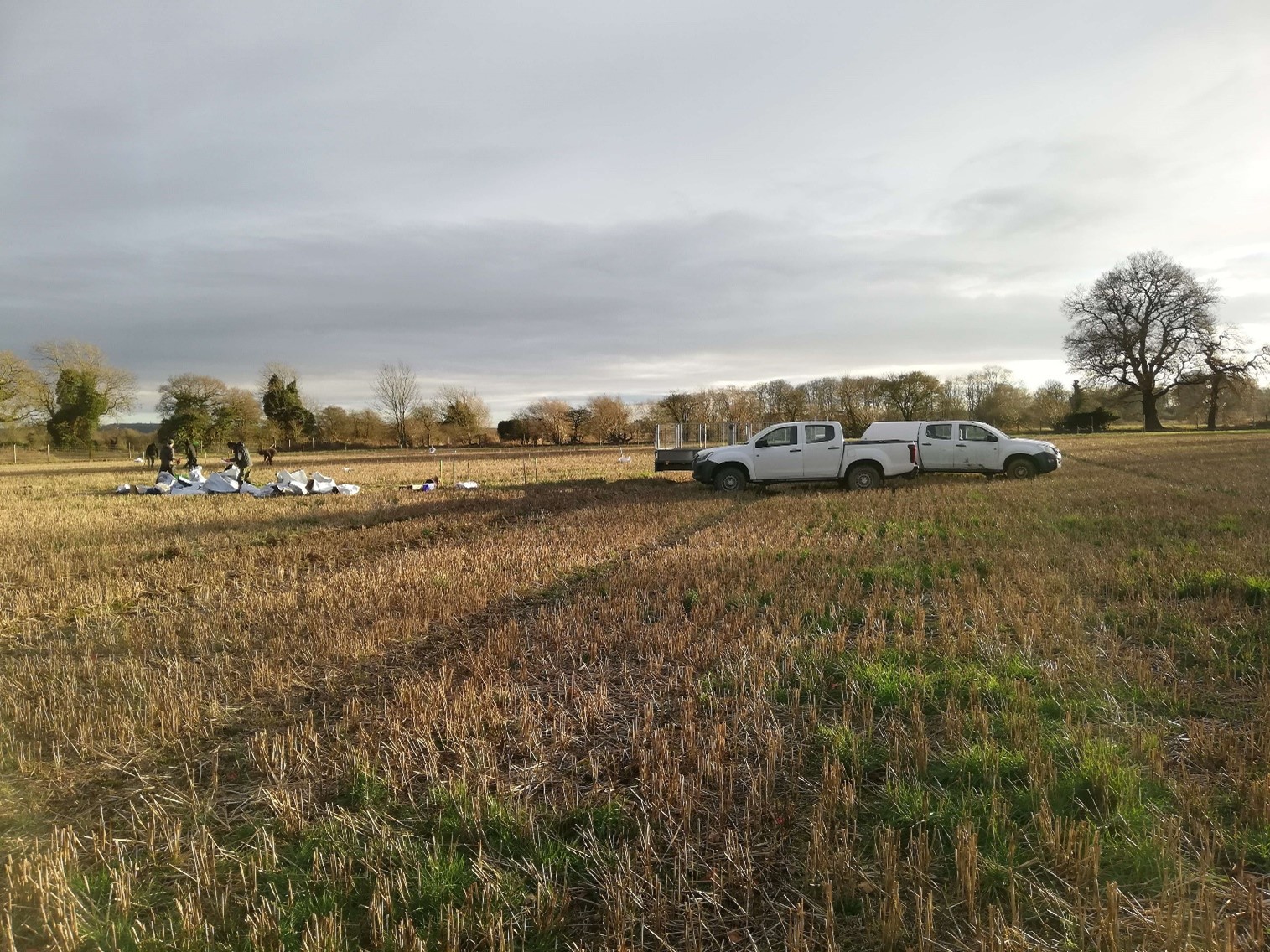
Image: Planting Oak, Birch and Sycamore
Forward look
- The vast majority of the work for this project wase carried out between November 2023 and February 2024.
- All the root architecture work will be done, and a detailed report written.
- We expect the root architecture to yield useful data pertaining to root structure, especially the number of feeder roots which we hope will elucidate findings on tree performance.
- The monographs will be published as downloadable pdfs.
Also, a thank you to Tubex for kindly donating voleguards and to Green-tech for donating bamboo canes which helps make our project more viable.
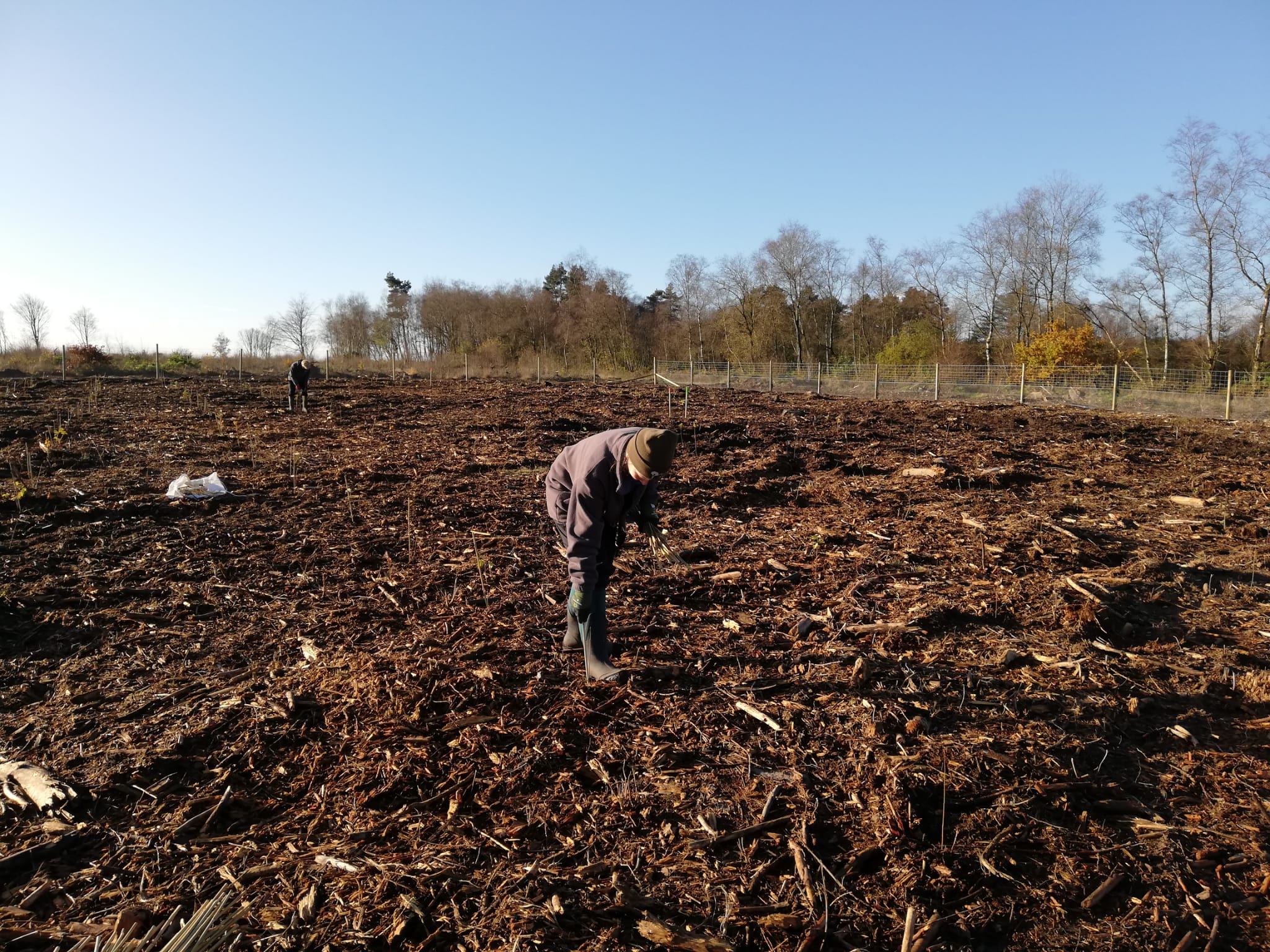
Image: Installing Tubex voleguards to protect new planting.
